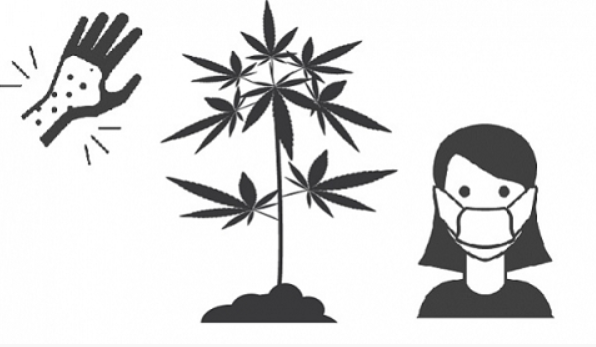Understanding Marijuana Allergy
Substances that are prohibited or stigmatized are often poorly studied, and people rarely discuss their specific side effects. Fortunately, with the legalization of marijuana in some countries, more information is now available, and people are less afraid to talk about their experiences.
Generally, marijuana does not have serious contraindications or side effects compared to most other substances. The most well-known effects are “red eyes” and increased heart rate. Red eyes are usually caused by blood vessel dilation, but there’s more to it. Some people experience side effects not typically associated with marijuana, such as a runny nose and itchy eyes. According to doctors in the United States, these are symptoms of an allergy.
CBD (cannabidiol, found in marijuana) is sometimes used to treat common allergies, but it’s possible to be allergic to marijuana itself. In these cases, the allergy is not to CBD, but to other parts of the plant.
How Common Is Marijuana Allergy?
Marijuana allergy may not be rare, though it’s too early to provide exact numbers. About 20% of people have seasonal allergies, meaning they react poorly to plant pollen. Since marijuana is also a plant that produces pollen, people with allergies are more likely to react to marijuana as well.
This isn’t surprising, but for decades, people didn’t even dare to talk about it. Many have hidden (and still hide) their marijuana use, so doctors and scientists haven’t had the chance to collect much data.
Recent scientific and medical publications from the U.S., Canada, and other countries report that marijuana allergies are being diagnosed more frequently. The main reason isn’t that marijuana has become more allergenic (though high-THC strains may contribute), but that people are less afraid to report their symptoms to allergists. In Russia and the CIS, this topic is still rarely discussed, so users are responsible for monitoring their own health.
Symptoms and Risks
Marijuana allergy can be mild and barely noticeable, causing no discomfort or long-term problems. However, ignoring allergy symptoms can lead to chronic and unpleasant conditions. Common symptoms include:
- Persistent nasal congestion
- Runny nose
- Wheezing
- Chronic cough
- Rash on the hands
- Itchy or irritated eyes
These symptoms are more likely in people who use marijuana frequently and in large amounts, as marijuana is not a particularly strong allergen for most people.
In rare cases, more serious reactions like anaphylaxis can occur. This severe allergic reaction may include vomiting, skin rash, and serious breathing problems.
Allergy symptoms may not appear immediately. The immune system can become sensitive to an allergen after several exposures, so it may take 5–10 uses before any symptoms are noticed.
Cross-Reactivity with Other Allergens
If you are allergic to marijuana, there’s a high chance you may also react to certain foods such as bread, nuts, bananas, peaches, cherries, apples, and others. There may also be cross-reactivity with latex, alcohol, and cigarettes.
What to Do If You Suspect a Marijuana Allergy
Some people mistakenly believe that unpleasant sensations from smoking are “normal.” They are not. If you experience allergic reactions, consider changing your method of consumption or taking a break from marijuana. Sometimes, simply changing your climate, diet, or lifestyle can reduce your body’s allergic sensitivity.
There is no universal solution. Switching to edibles (foods containing THC) may help, but not always. Some people react not only to smoke but also to oral consumption. In such cases, the only solution may be to stop using marijuana, especially if you develop asthma, which is one of the most dangerous allergic reactions.
Managing Symptoms and Reducing Risk
The good news is that most people with mild symptoms can continue using marijuana. If your symptoms are limited to a runny nose or mild itching and do not worsen over time, allergists recommend taking antihistamines (such as Suprastin or Tavegil) before use. You can also try switching to a vaporizer, edibles, or strains with lower THC content. If this works for you, you’ll notice the difference right away.



